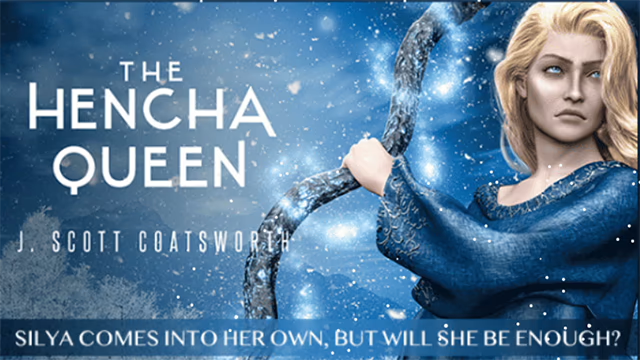I dove into the third installment of J. Scott Coatsworth’s Tharassas Cycle series eagerly. Silya’s status as the Hencha Queen was established earlier in the series, and I’ve looked forward to learning more about how she adapts to and grows into her new role, as well as her new powers, in the book that’s named after her.

Her two friends, Aik and Raven, have each had their turn in the spotlight. I expected this book to focus on Silya, but as it turns out, the trio of friends are coping with circumstances that encompass everyone, and everything. Isolating Silya simply to fulfill a contrived separation of her adventures would do the overall story arc a disservice. Silya, along with Aik, Raven, and Spin are all doing the best they can as humanity struggles to survive on the rapidly changing planet they’ve called home for 400 years.
So far, it feels like Raven’s found his destiny and is doing his best to embrace it. Silya has taken to her role as the Hencha Queen and is learning about the powers that come with it. Aik, however, seems to be the foot-dragger for the trio. And that’s fine – it’s realistic, as not everyone in any reality proceeds at the same pace. He’s trying, but everything seems harder for him, not to mention that he’s carrying the weight of his feelings for Raven in a way that feels self-sabotaging at times. I didn’t expect him to have the softest heart, but that’s what I’m seeing.
As far as I’m concerned, there’s five main characters in this series. Besides Aik, Raven, Silya, and Spin, I count the planet of Tharassas with it’s purpose-driven animals and sentient plant life, to have a personality of its own. The author has worldbuilt the heck out of the place, giving the humans a rich culture and civilization, exploiting the local plant life for all its worth, and creating animals that sometimes feel familiar in spite of their alien names.
My only nitpick would be the limited resource options for food and supplies mentioned throughout the series. I’m sure there’s plenty of variety in the character’s diets, but the sheer number of times someone has craved a ‘foldover’ is staggering. When characters aren’t craving foldovers, they’re usually working with something hencha-based. The variety of uses for a hencha plant is impressive. Mentioning more of other foods and materials sources more often would have enriched the food and supplies available on Tharassas, and could have helped keep foldovers and hencha plants from feeling just a touch Mary-Sue-ish.
Clearly though, if that’s my only nitpick, the overall health of the worldbuilding and plotting is fantastic! I’m about to crack into The Death Bringer, the fourth and final book in the Tharassas Cycle. I’m emotionally invested in the people of Tharassas now, and I swear it would physically hurt if I weren’t allowed to be in on the conclusion of this amazing adventure.
![]()
Lori Alden Holuta lives between the cornfields in Michigan, where she grows herbs and vegetables when she’s not playing games with a cat named Chives. She’s fond of crafting, reading in the dark, literary worldbuilding, and pulling up dandelions. Visit Lori at brassbrightcity.com and ceejaywriter.com.













Thanks for the info.
I don’t have Tharassas Cycle, but now I intend to get it!
I hope you enjoy it! I’m excited about getting into the final book of the series in a couple of days.